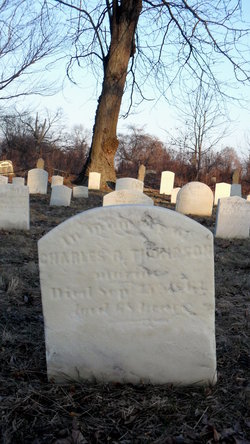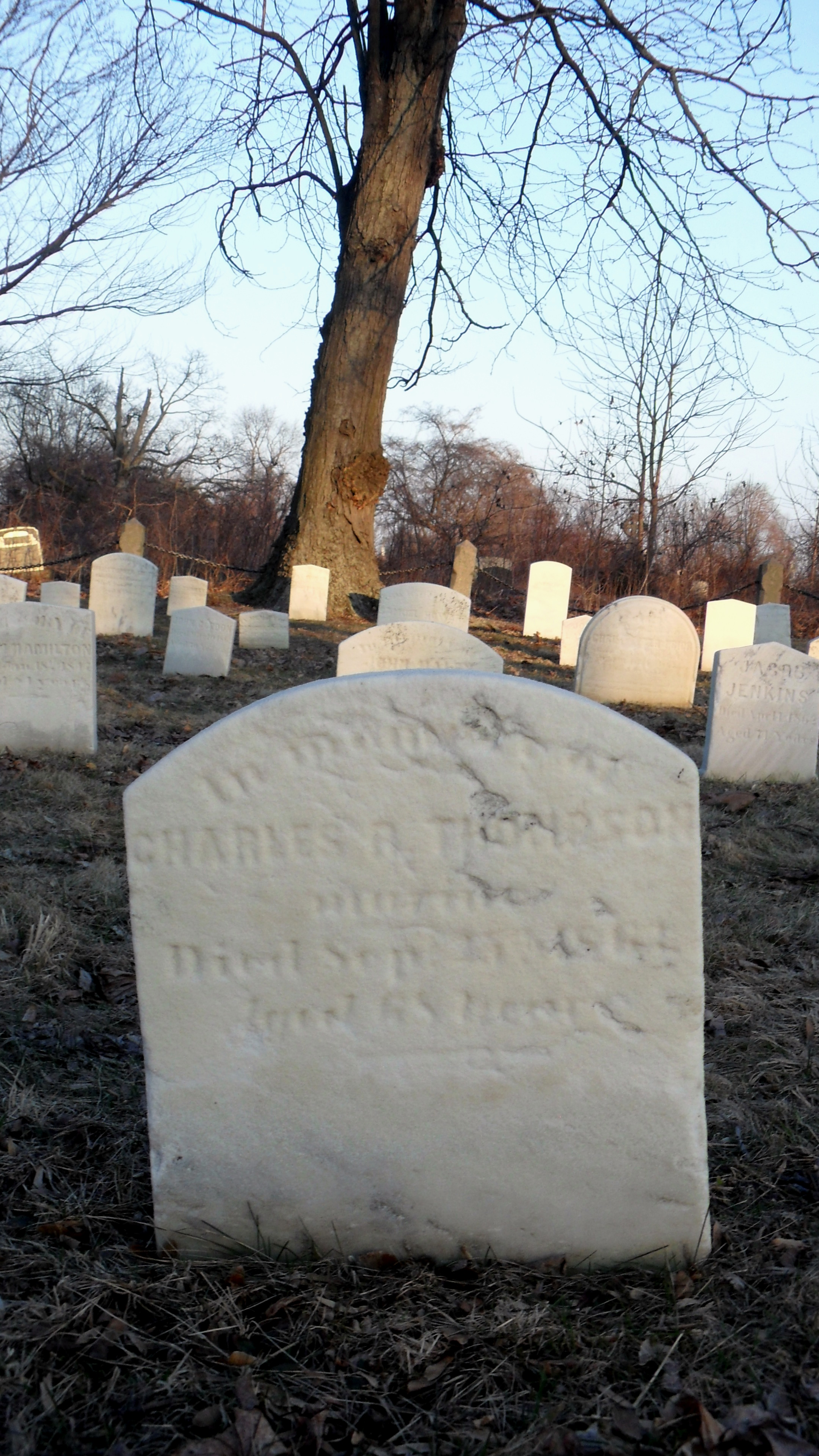Pennsylvania Veterans Burial Cards, 1777-1999 about Charles B Thompson
Name: Charles B Thompson
Birth Date: 1795
Death Date: 25 Sep 1863
Age: 68
Military Branch: Marines
Cemetery Name: Mt, Motiab
Cemetery Location: Yeadon, Delaware County, Pennsylvania
U.S. Veterans Gravesites, ca.1775-2006 about Charles R Thompson
Name: Charles R Thompson
Service Info.: US MARINE CORPS
Death Date: 25 Sep 1863
Cemetery: MT. Moriah Naval Plot
Cemetery Address: 62nd St & Kingsessing Ave Philadelphia, PA 19142
Buried At: Section 2 Row 5 Site 7
Photo:
The Naval Asylum
While the U. S. Naval Academy at Annapolis was not established until 1845, it had been recognized early in the Navy's history that the training of officers needed to be addressed formally. In 1802 the education of midshipmen was resolved by instructing them aboard ships at sea with chaplains as schoolmasters. The need to provide instructions in mathematics and navigation led to the authorization in 1813 of civilian schoolmasters, and teachers of these areas, eventually appointed as professors of mathematics. By the early 1830s cram schools were operating in three states and beginning in 1838 midshipmen approaching examinations for promotion, were assigned to a naval school in Philadelphia for 8 months of study. For an understanding of what the life of a midshipman at-sea might have been like, read the novels of C.S. Forester and Patrick O'Brian.
First planned in 1799, the Philadelphia Naval Asylum was built in 1833. From 1839 to 1845 it had three naval functions, an asylum for retired sailors, a naval hospital, and a naval academy for midshipmen. At left is the main hall in 1838. The classic Greek-revival building still stands today, though in woeful condition. The central building was named Biddle Hall, after the naval hero. The midshipman program was informal and poorly equipped. In 1842 William Chauvenet was placed in charge of the school and immediately took steps to improve the program. A tougher course of study was enacted and new instruments were obtained for students to work with. His proposal for expanding the school to a two-year program provided George Bancroft, then Secretary of the Navy, with a workable plan for a permanent academy and the ultimate establishment of the new Naval School at Annapolis, Maryland. Bancroft opted to move the Naval School to the healthy and secluded location of Annapolis in an effort to rescue midshipmen from the temptations and distractions that necessarily connected with a large and populous city. For more information about the Naval Asylum, see 'Beautifully situated on the River Schuylkill'.
Click Link to see all The Lost Sailors I've Found
http://www.findagrave.com/cgi-bin/fg.cgi?page=vcsr&GSvcid=266131
Pennsylvania Veterans Burial Cards, 1777-1999 about Charles B Thompson
Name: Charles B Thompson
Birth Date: 1795
Death Date: 25 Sep 1863
Age: 68
Military Branch: Marines
Cemetery Name: Mt, Motiab
Cemetery Location: Yeadon, Delaware County, Pennsylvania
U.S. Veterans Gravesites, ca.1775-2006 about Charles R Thompson
Name: Charles R Thompson
Service Info.: US MARINE CORPS
Death Date: 25 Sep 1863
Cemetery: MT. Moriah Naval Plot
Cemetery Address: 62nd St & Kingsessing Ave Philadelphia, PA 19142
Buried At: Section 2 Row 5 Site 7
Photo:
The Naval Asylum
While the U. S. Naval Academy at Annapolis was not established until 1845, it had been recognized early in the Navy's history that the training of officers needed to be addressed formally. In 1802 the education of midshipmen was resolved by instructing them aboard ships at sea with chaplains as schoolmasters. The need to provide instructions in mathematics and navigation led to the authorization in 1813 of civilian schoolmasters, and teachers of these areas, eventually appointed as professors of mathematics. By the early 1830s cram schools were operating in three states and beginning in 1838 midshipmen approaching examinations for promotion, were assigned to a naval school in Philadelphia for 8 months of study. For an understanding of what the life of a midshipman at-sea might have been like, read the novels of C.S. Forester and Patrick O'Brian.
First planned in 1799, the Philadelphia Naval Asylum was built in 1833. From 1839 to 1845 it had three naval functions, an asylum for retired sailors, a naval hospital, and a naval academy for midshipmen. At left is the main hall in 1838. The classic Greek-revival building still stands today, though in woeful condition. The central building was named Biddle Hall, after the naval hero. The midshipman program was informal and poorly equipped. In 1842 William Chauvenet was placed in charge of the school and immediately took steps to improve the program. A tougher course of study was enacted and new instruments were obtained for students to work with. His proposal for expanding the school to a two-year program provided George Bancroft, then Secretary of the Navy, with a workable plan for a permanent academy and the ultimate establishment of the new Naval School at Annapolis, Maryland. Bancroft opted to move the Naval School to the healthy and secluded location of Annapolis in an effort to rescue midshipmen from the temptations and distractions that necessarily connected with a large and populous city. For more information about the Naval Asylum, see 'Beautifully situated on the River Schuylkill'.
Click Link to see all The Lost Sailors I've Found
http://www.findagrave.com/cgi-bin/fg.cgi?page=vcsr&GSvcid=266131
Advertisement
Explore more
Sponsored by Ancestry
Advertisement



